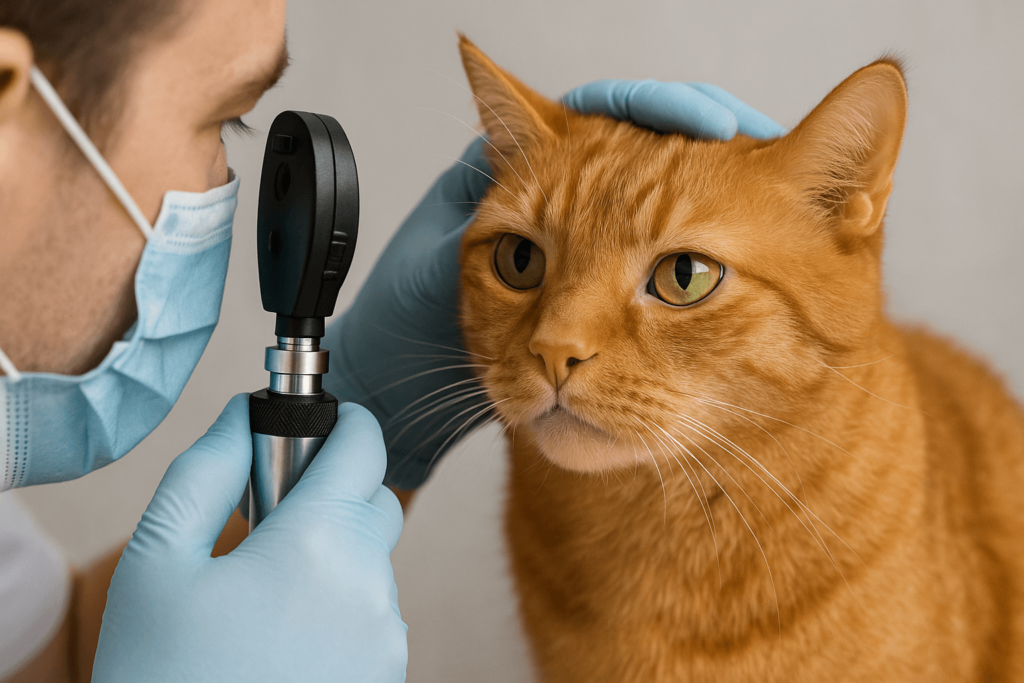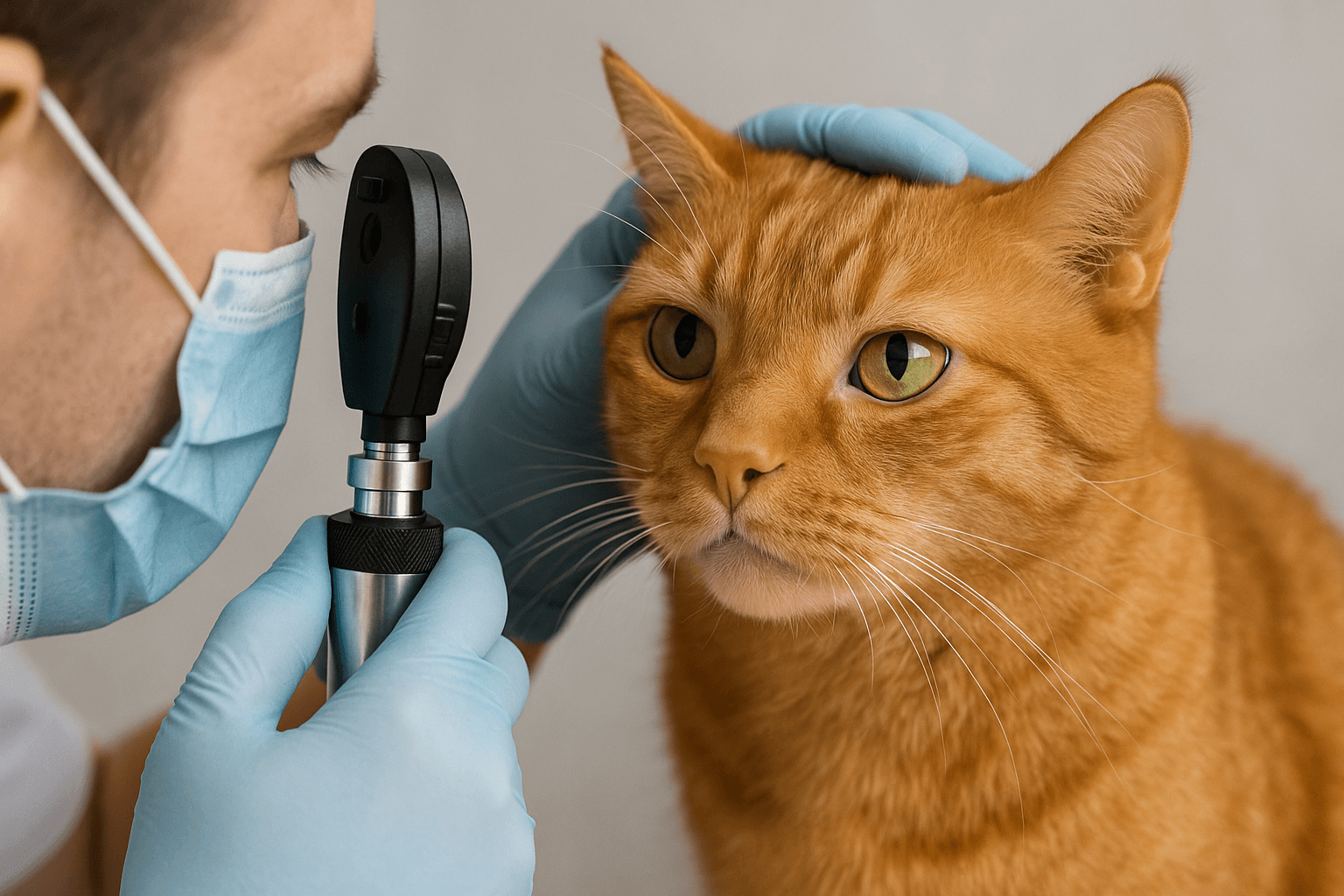Cat Blindness Treatment: Understanding and Managing Vision Loss in Cats
Vision is one of the most vital senses for cats, enabling them to navigate their environment, hunt, and interact with their surroundings. However, blindness in cats—whether sudden or gradual—can be a challenging condition for both pets and their owners. While some cases of feline blindness are irreversible, there are treatments, management strategies, and supportive care options that can significantly improve a cat’s quality of life. This blog post explores the causes, treatments, and practical steps you can take to help your blind cat thrive despite their condition.
Common Causes of Cat Blindness
Understanding the underlying causes of blindness in cats is crucial for determining the appropriate treatment and care plan. Here are some of the most common reasons why cats may experience vision loss.
Hypertension (High Blood Pressure):
High blood pressure can damage the retina or optic nerve, leading to sudden blindness if left untreated.Diabetes:
Diabetic cats are at risk of developing retinal detachment or other complications that affect vision.Cataracts:
Clouding of the lens in the eye can impair vision and eventually lead to blindness if not addressed.Glaucoma:
Increased pressure within the eye can cause pain and permanent vision loss if not managed promptly.Trauma or Injury:
Accidents or injuries to the eyes can result in partial or complete blindness, depending on severity.
Identifying the root cause of blindness is the first step toward providing effective treatment and support for your cat.

Treatment Options for Cat Blindness
While not all cases of blindness in cats can be cured, many conditions respond well to treatment when diagnosed early. Here are some common treatment approaches used to address feline blindness.
Medications for Hypertension:
Drugs like amlodipine can help lower blood pressure and prevent further damage to the eyes.Surgery for Cataracts:
In some cases, cataract removal surgery may restore partial or full vision to affected cats.Eye Drops for Glaucoma:
Prescription eye drops can reduce intraocular pressure and alleviate symptoms associated with glaucoma.Dietary Adjustments for Diabetes:
A balanced diet combined with insulin therapy can manage diabetes and reduce the risk of related blindness.Pain Management for Trauma:
Anti-inflammatory medications or pain relievers may be prescribed to address discomfort caused by eye injuries.
Early intervention and adherence to veterinary recommendations are key to maximizing your cat’s chances of recovery or stabilization.
Check this guide 👉Understanding Cat Eye Mites: Best 7 Expert Tips!
Check this guide 👉Understanding Cat Eye Cataracts: Best 7 Expert Tips!
Check this guide 👉Understanding Cat Eye Mites: Best 7 Expert Tips!
Preventive Measures for Cat Blindness | Signs Your Cat May Be Losing Vision |
|---|---|
Regular vet check-ups | Bumping into furniture or walls |
Monitoring blood pressure | Hesitation to jump or climb |
Feeding a balanced diet | Dilated or cloudy eyes |
Keeping cats indoors to avoid accidents | Squinting or pawing at the eyes |
Addressing health issues promptly | Changes in behavior or activity levels |
How to Adapt Your Home for a Blind Cat
If your cat has already lost its vision, creating a safe and supportive environment is essential for their well-being. These tips will help you modify your home to accommodate your blind cat’s needs.
Keep Furniture Arrangements Consistent:
Avoid rearranging furniture, as familiar layouts help blind cats navigate confidently.Use Textured Mats or Rugs:
Placing textured mats near food bowls or litter boxes can serve as tactile markers for orientation.Block Off Hazardous Areas:
Use baby gates or barriers to prevent access to stairs, balconies, or other potentially dangerous areas.Provide Clear Pathways:
Remove clutter and obstacles from walkways to ensure your cat can move freely without bumping into objects.Enhance Scent Markers:
Use scented oils or sprays sparingly to create subtle scent trails that guide your cat around the house.
By adapting your home thoughtfully, you can empower your blind cat to live comfortably and independently.
Supporting Your Blind Cat Emotionally
Blindness can be disorienting and stressful for cats, but emotional support plays a vital role in helping them adjust. Here are ways to nurture your cat’s mental and emotional well-being.
Maintain a Routine:
Stick to a consistent daily schedule for feeding, playtime, and grooming to provide stability and predictability.Engage in Interactive Play:
Use toys with bells, feathers, or textures to stimulate your cat’s remaining senses and encourage exploration.Offer Reassurance Through Touch:
Gentle petting and cuddling can comfort your cat and strengthen your bond during this transition period.Talk to Your Cat Often:
Speaking softly and using your voice as a guide helps reassure your cat and reduces anxiety.Introduce New Experiences Gradually:
Allow your cat time to explore new spaces or changes in their environment at their own pace.
Providing emotional support ensures your blind cat feels loved and secure despite their visual impairment.
Early Warning Signs of Cat Blindness
Recognizing the early signs of vision loss in cats allows for timely intervention and better outcomes. Keep an eye out for these subtle indicators that something might be wrong.
Difficulty Finding Food or Water Bowls:
A blind or partially blind cat may struggle to locate familiar items like food or water dishes.Reluctance to Enter Dark Rooms:
Cats experiencing vision loss often avoid dimly lit areas where they feel less confident navigating.Increased Vocalization:
Some blind cats vocalize more frequently as a way to seek reassurance or orient themselves.Unusual Pupil Size or Shape:
Abnormalities in pupil appearance, such as dilation or unevenness, can signal vision problems.Excessive Eye Discharge or Redness:
Persistent tearing, discharge, or redness may indicate an underlying issue affecting the eyes.
Addressing these signs promptly can make a significant difference in preserving your cat’s vision or managing their condition effectively.
Preventive Care for Feline Eye Health
Prevention is always better than cure when it comes to maintaining your cat’s eye health. These proactive measures can reduce the risk of blindness and promote long-term wellness.
Schedule Regular Vet Visits:
Routine check-ups allow your veterinarian to detect potential eye issues before they progress.Monitor Weight and Diet:
Obesity and poor nutrition can contribute to conditions like diabetes, which increase the risk of blindness.Clean Your Cat’s Eyes Regularly:
Gently wiping away dirt or discharge keeps the eyes clean and reduces the chance of infections.Limit Exposure to Toxins:
Avoid exposing your cat to harmful chemicals or plants that could irritate or damage their eyes.Supervise Outdoor Time:
If your cat goes outside, supervise their activities to minimize the risk of injury or trauma.
Taking these preventive steps safeguards your cat’s vision and ensures a healthier future.
Building Confidence in Blind Cats
Helping your blind cat regain confidence after vision loss involves patience and encouragement. These strategies foster independence and resilience.
Encourage Exploration Safely:
Guide your cat gently through familiar spaces to help them relearn their surroundings without fear.Reward Small Achievements:
Offer treats or praise when your cat successfully navigates a new area or completes a task independently.Create a Safe Space:
Designate a cozy, quiet area where your cat can retreat whenever they feel overwhelmed or anxious.Use Positive Reinforcement:
Reward calm behavior and curiosity to reinforce positive associations with their environment.Be Patient During Transitions:
Allow your cat ample time to adjust to changes, whether it’s moving furniture or introducing new routines.
With consistent support, your blind cat can learn to navigate their world confidently and happily.
Frequently Asked Questions About Cat Blindness Treatment
Can blindness in cats be reversed?
Some causes of blindness, such as cataracts or hypertension-related damage, may be treatable, but others are permanent.
How do I know if my cat is going blind?
Signs include bumping into objects, dilated pupils, squinting, and behavioral changes like hesitating to move.
Is it cruel to keep a blind cat?
No, blind cats can live happy, fulfilling lives with proper care and environmental adaptations.
What should I feed a blind cat?
A nutritionally balanced diet tailored to any underlying health conditions is ideal for supporting overall wellness.
Can blind cats still enjoy playtime?
Absolutely! Using sound-based or textured toys allows blind cats to engage in interactive and stimulating activities.
Empowering Your Blind Cat to Thrive
While cat blindness can be a daunting challenge, it doesn’t have to define your pet’s life. With early diagnosis, appropriate treatment, and thoughtful adjustments to your home and routine, you can give your blind cat the tools they need to adapt and flourish. Remember, patience, love, and understanding go a long way in helping your feline companion adjust to their new reality. By focusing on what your cat can do rather than what they’ve lost, you’ll discover that even without sight, they can lead a joyful and fulfilling life.
Cat Fever Treatment: Best 7 Expert Tips! Discover expert advice on identifying, managing, and treating fever in cats to ensure their quick recovery and well-being.
Understanding Meloxicam for Cats: Best 7 Expert Tips! Learn how to safely administer meloxicam, manage side effects, and ensure your cat's comfort with expert advice on feline pain relief.
Amoxicillin for Cat UTI: Best 7 Expert Tips! Discover safe usage, dosage guidelines, and expert advice on treating feline urinary tract infections effectively with amoxicillin.
Understanding Cat Cancer Treatment: Best 7 Expert Tips! Discover expert advice on managing feline cancer, from early detection to treatment options, ensuring your cat’s health and comfort.





